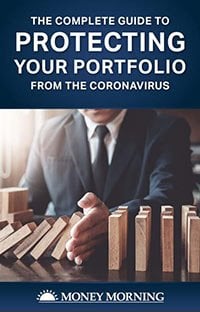
The stock market drubbing from Feb. 24 to March 6 eradicated $4.6 trillion in shareholder wealth.
Then on Monday, March 9, the S&P 500 tanked 7% within five minutes of the market opening. That triggered the first trading halt since November 2016.
All told, stocks fell by 34% between the end of February and the bottom around March 23.
That’s all thanks to the coronavirus pandemic and resulting lockdowns that sent the economy into the one of the worst recessions in decades.
But then something curious happened…
Markets rallied over the summer. In fact, the S&P 500 and Nasdaq hit an all-time highs toward the end of August.
Of course, we’re not out of the water yet. The Dow Jones still struggles to regain its highs before the crash, and volatility is creeping back into the markets.
The pandemic is still with us, and there is a threat of another resurgence in the fall and winter as flu season rolls in.
No one is certain where markets are heading next.
But that's not a reason to panic.
Just the opposite, in fact.
The reality is that you have an advantage over the average investor.
You have us. We're going to show you how to put a coronavirus portfolio protection plan in place for the unknowns you're facing.
The coronavirus epidemic is something economists refer to as an "exogenous shock," an impossible-to-predict event that didn't stem from the economy. The terrorist attacks of Sept. 11, 2001, are another example.
It could happen again, for all we know.
How far and fast the market will drop depends on a handful of factors.
We’ll lay out which risks you should take seriously, which are all hype, and most importantly, how you can not just protect your money, but make money in this volatile market…
Just enter your e-mail address to read it now:
